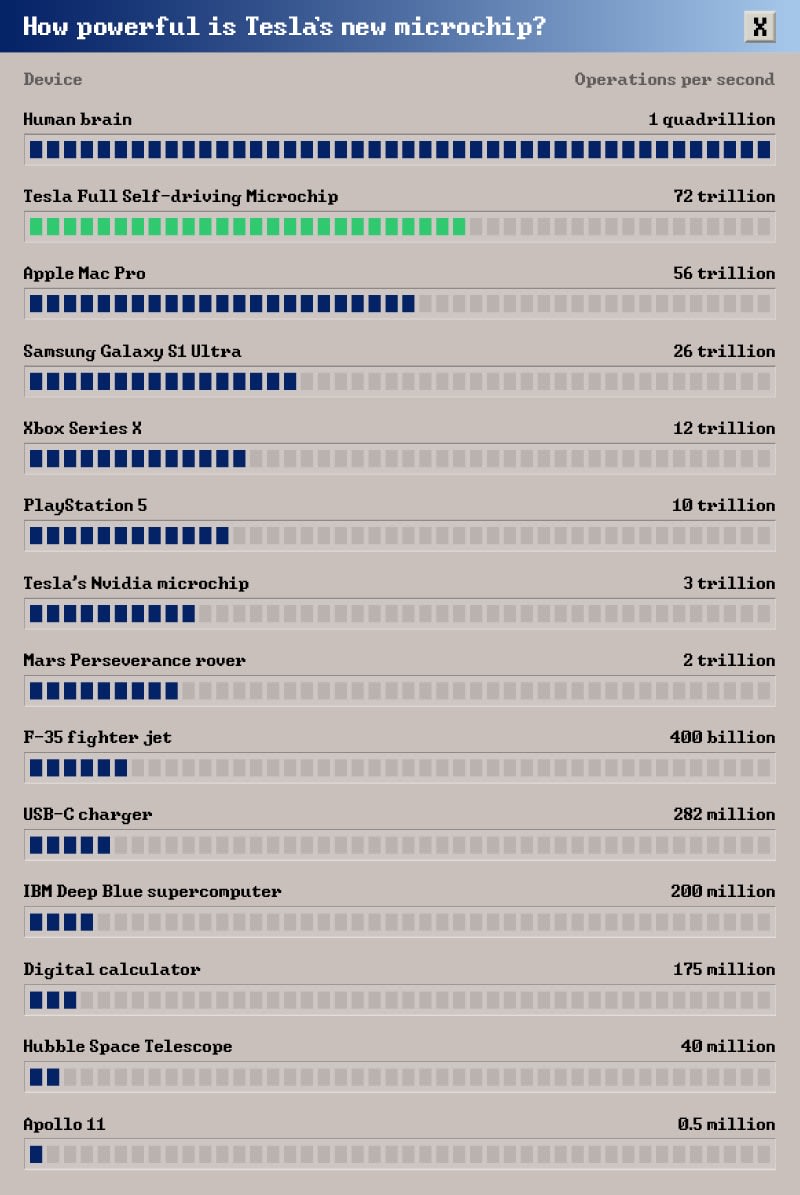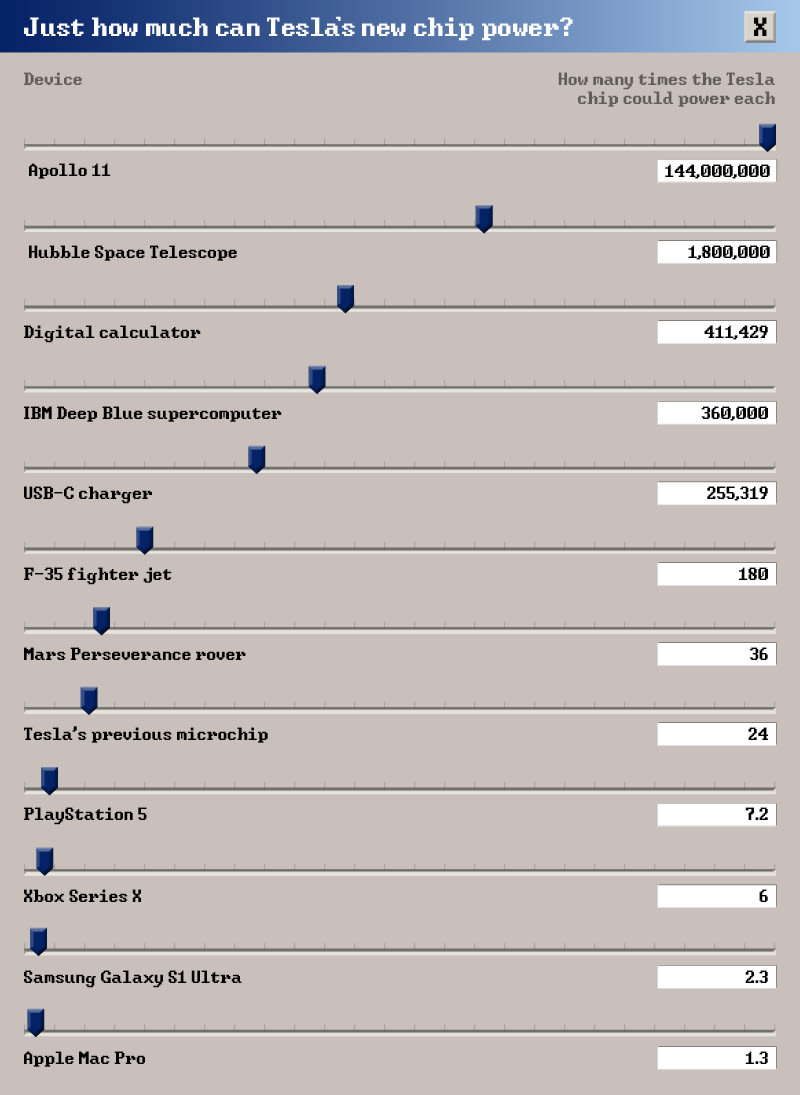If there’s one thing you can guarantee in today’s world, it’s the non-stop churn of new technology. Turn around and you’ve missed the latest suite of Apple iPhones and smartwatches. There are even fridges capable of video streaming.
The automotive industry is no stranger to the trends, either. Manufacturers are piling millions into the development of more ambitious electric cars especially. Where there was once a handful of viable EVs, the makers are now jostling for prominence in a competitive market.
The latest marketing tactic for Tesla CEO, Elon Musk, isn’t so much the on-road performance but the computing that powers it. So, the baffling numbers of his latest microchip have us wondering just how powerful is Tesla’s artificial intelligence (AI)?
Tesla’s new microchip is smarter than the USA’s F-35 fighter jet

Very. Musk is claiming a 21-times improvement on the previous chip from Nvidia. Developed by Tesla itself and manufactured by Samsung, it’s made up of two ‘neural network arrays’ that are each capable of 36 trillion operations per second.
This allows it to process camera, sensor, radar and GPS data on the fly – especially useful for Tesla’s automated driving functions. They even claim it’s smart enough to power fully self-driving cars when the tech and law allow.
To put that into context, the Apollo 11 rocket that first took us to the surface of the Moon in 1969 managed only several hundred thousand operations per second. The Perseverance rover that landed on Mars in February 2021 only manages two trillion operations, or two teraflops in tech speak.
Even the IBM Deep Blue supercomputer that controversially beat world chess champion Garry Kasparov lags way behind on 200 million. The only ‘computer’ to top Tesla’s new chip in our research is the human brain, with a near-incalculable one petaflop of processing power – one quadrillion operations.
The new chip could power nearly 150 million trips to the Moon

To really show the might of Tesla’s new AI, we also calculated how many times the microchip could power the other devices and machines in our findings.
Most staggering is that it could replicate Neil Armstrong, Buzz Aldrin and Michael Collins’ trip to the Moon an incomprehensible 144 million times. Elsewhere in the Solar System, Nasa could’ve explored Mars with 36 Perseverance rovers at once, as opposed to the one ‘Percy’ that’s currently on the Red Planet.
It’s even got enough computing torque to power up to seven PlayStation 5 or Xbox Series X consoles, the latest and most powerful available, at once. In fact, the new Model S and Model X feature an in-car display that alone is capable of 10 teraflops’ worth of power – almost equal to the PS5 and Series X. Musk himself teased the ability to play full videogames on the system.
An F-35, the US Air Force’s ultra-advanced fighter jet, could be powered 180 times.
There’s also enough capability to charge over a quarter of a million devices through the new USB-C format. And it does all that with only 15 watts of added energy consumption and a 20% saving on costs over the previous chip. Impressive.
With the new chips already shipping in Tesla’s latest models, despite a global shortage, the benefit can already be seen. But with April’s announcement that self-driving cars could be legalised on UK roads this year, albeit with limited function, they could become an even bigger upgrade.
Enjoyed this? Read our latest news:
- NASA technology in our cars: the past, the present and the future
- The Franken-kar: a masterpiece from the most misunderstood motors?
- Complete Guide To The Strangest Steering Wheels Ever Created
- Porsche or Porsh-ah? Ultimate guide to mispronounced carmakers
-
Mario Kart meets reality: real cars get video game makeovers
For all the latest reviews, advice and new car deals, sign up to our newsletter here.















